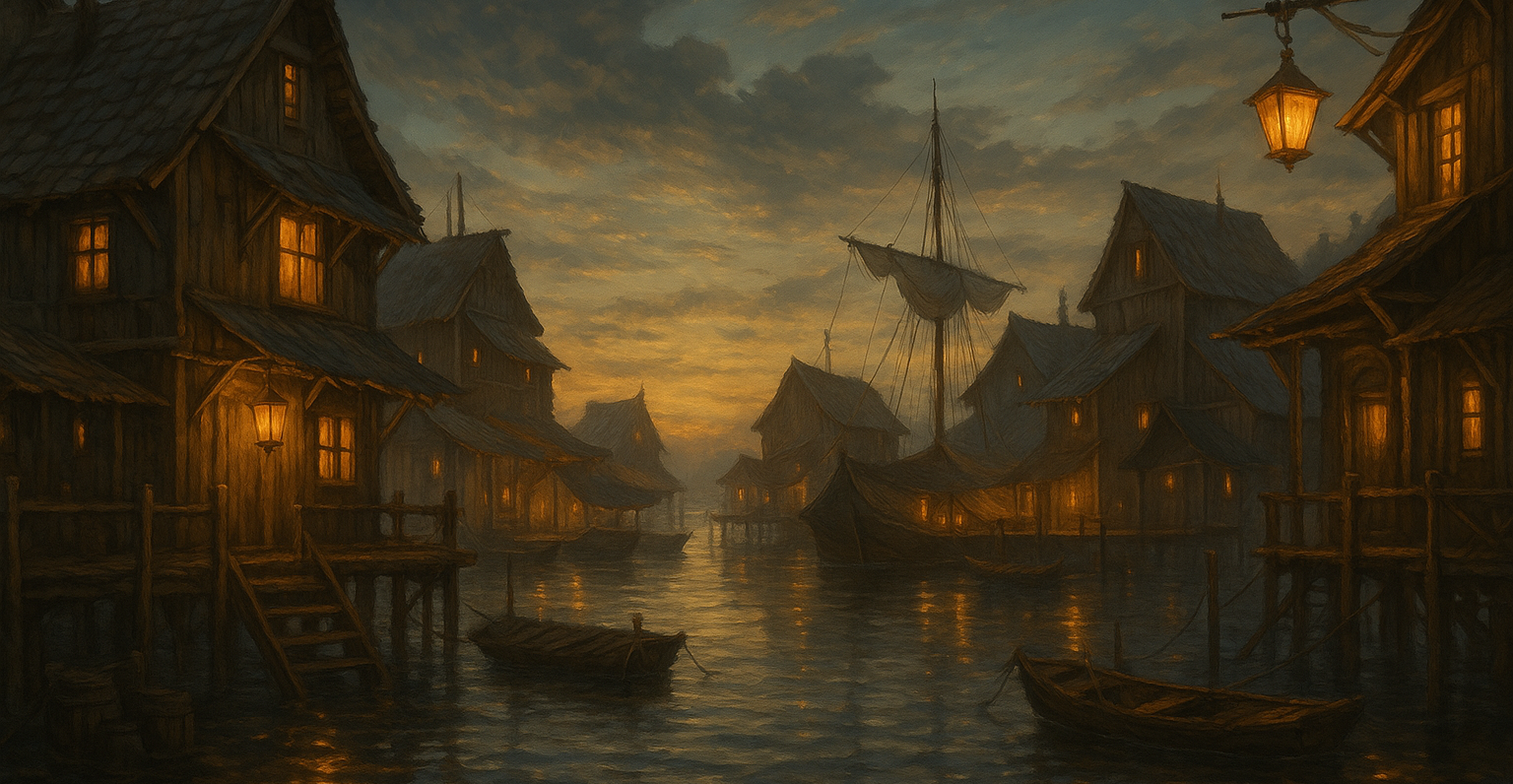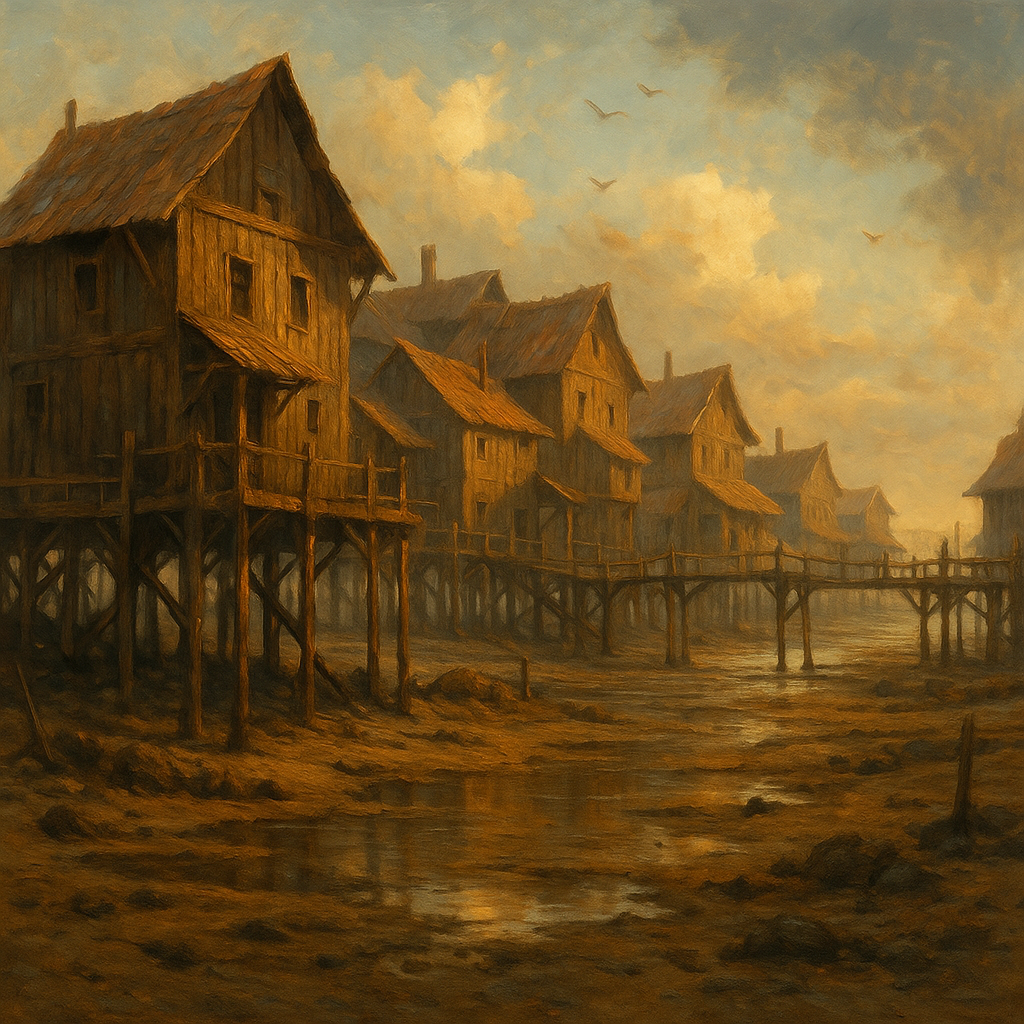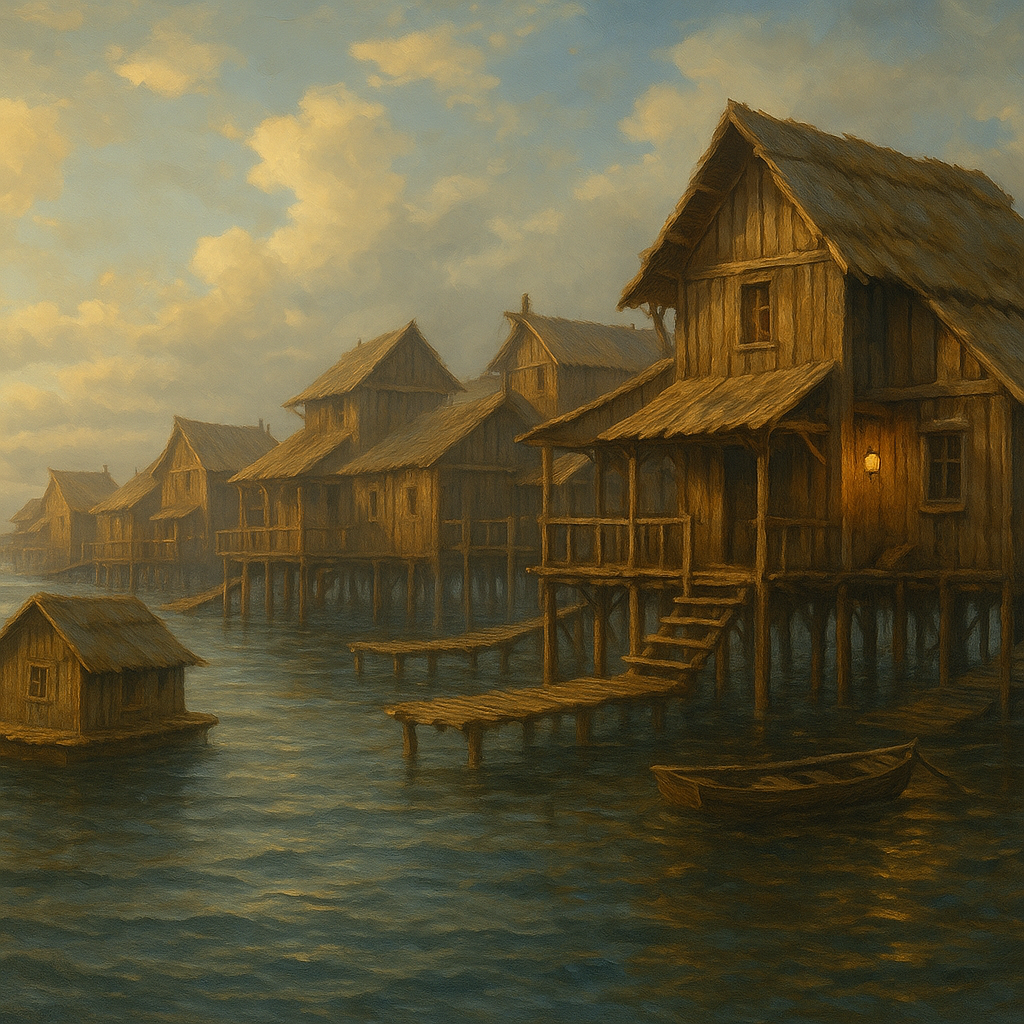Tirlowen - Town
Nestled against the northern cliffs of Miranore, Tirlowen rests on a tidal island cradled by broad mudflats and rocky shoals. At low tide, stone causeways and packed-earth roads emerge like veins across the exposed seabed, linking Tirlowen to the mainland. At high tide, the town becomes an island, sometimes entirely submerged at its edges.
The people of Tirlowen are known across Miranore as the Driftfolk, a mix of semiaquatic races (like tritons, merrow-blooded, or selkies), islander humans, and even a few Sea-elves who favor coastal life. Their society is built around adaptation, floating markets, homes that rise and fall with the tide, and a stubborn pride in thriving where others would drown.
Demographics
Tirlowen’s population is a vibrant mosaic shaped by the rhythms of the sea and the necessity of adaptation. While humans form the majority, their lives are deeply entwined with a variety of coastal and aquatic peoples who call the shifting tides of Tirlowen home.
- Humans – Resilient and industrious, humans make up the core of Tirlowen’s year-round population. Many are long descended from seafarers and fisherfolk, their architecture and customs evolved to handle seasonal flooding and floating infrastructure.
- Sea Elves – Known for their grace and adaptability, Sea Elves live both in the stilted homes above the waterline and in hidden grottos below. Their presence ensures deep familiarity with local currents, weather, and marine life.
- Selkies – Shapeshifters who alternate between seal and humanoid form, Selkies dwell in the outskirts of Tirlowen or slip between communities, often serving as traders, messengers, or spiritual guides.
- Fae – Drawn to the impermanence of the landscape, a small number of water-bound or tide-touched fae live among the population. Their homes are often hidden or mobile, and their motives, as always, are their own.
- Merrow – Appearing only during high-tide season, Merrow are treated almost like migratory residents. Some act as seasonal laborers or traders, while others maintain deeper roles in local politics or magic when the water is high enough to reach their underwater domains.
Industry & Trade
Tirlowen’s economy is shaped by the rhythm of the tides and the ingenuity of its people. While the town’s semi-aquatic nature presents challenges, it also offers a wealth of unique opportunities that have fostered a thriving local industry and modest but specialized trade network.
Primary Industries:
- Fishing & Aquaculture: The backbone of Tirlowen’s economy. Residents harvest a wide variety of coastal fish, eels, and shellfish—particularly oysters and mussels, which are considered a regional delicacy. Seaweed farms are also cultivated in the shallows, providing food and raw materials for medicine, textiles, and fertilizer.
- Tidal Foraging & Saltworks: As the waters recede, skilled foragers gather clams, barnacles, crustaceans, and magical tide-grown herbs. Shallow salt pools are used to extract high-quality sea salt, another valuable export.
- Shipbuilding & Repair: Tirlowen’s builders are renowned for crafting lightweight, flexible boats designed for shallow water and unpredictable currents. Small fishing skiffs, ferry-boats, and modular floating homes are common exports to nearby coastal towns.
- Textile & Ropecraft: Using fibers from coastal reeds, kelp, and imported flax, Tirlowen weavers produce sturdy water-resistant fabrics and strong marine ropes. Decorative knotwork, often imbued with fae influences, is sought after for both utility and aesthetics.
- Imports: Due to its isolated and tidal nature, Tirlowen depends on imports for lumber (beyond driftwood), metal tools, grains, and luxury items. Most trade comes throughKamulos and nearby Miranorian ports.
- Exports: In exchange, Tirlowen offers seafood, sea salt, salt-preserved goods, water-resistant cloth, medicinal herbs, artisan crafts, and small boats. Some merchants also sell tidal pearls and aquatic charms believed to bring good fortune at sea.
- Tidal Market: Tirlowen hosts a floating bazaar during the spring and autumn high tides, attracting traders, sea elves, fae peddlers, and the curious from surrounding regions. Goods are exchanged on floating platforms lashed together, sometimes trading hands as quickly as the tide turns.
Architecture
The architecture of Tirlowen is a testament to both resilience and necessity. Most structures are built from driftwood, treated timbers, or salvaged ship parts, chosen for their buoyancy and availability. Many homes are constructed on tall, flexible stilts driven deep into the seabed, while others are designed to float outright, lashed together with wide wooden planks or anchored by thick kelp rope and barnacle-encrusted chains. Walkways between buildings are often little more than tideworn docks or hinged bridges that rise and fall with the sea. Frequent storms and seasonal swells make permanence a rarity—residents are accustomed to rebuilding sections of the town every few years. Shingled roofs are steep and water-shedding, sometimes layered with fishscale tiles, while storm shutters and waterproof sealants are a standard part of every dwelling. Durability is a matter of survival, not style.






Comments